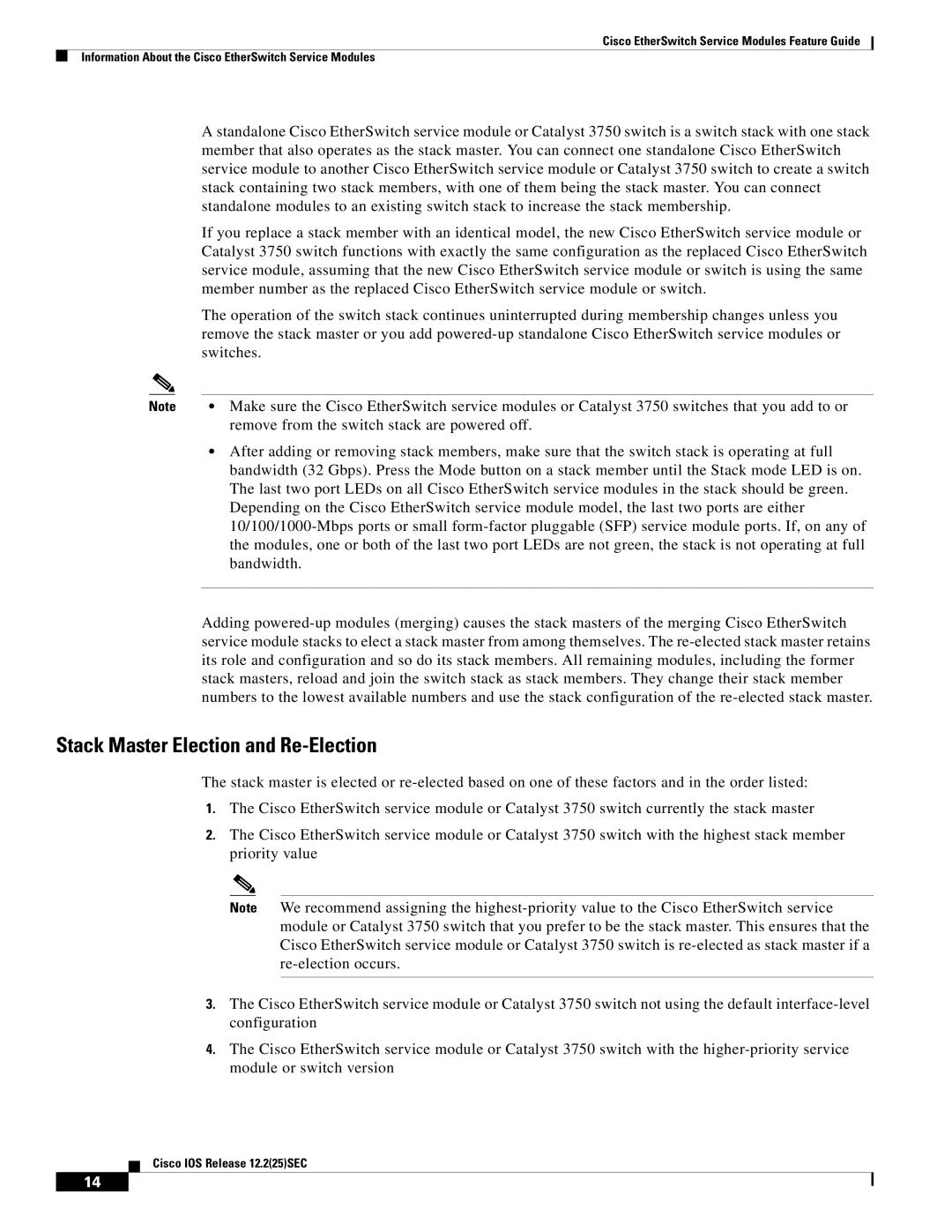
Cisco EtherSwitch Service Modules Feature Guide
Information About the Cisco EtherSwitch Service Modules
|
| A standalone Cisco EtherSwitch service module or Catalyst 3750 switch is a switch stack with one stack |
|
| member that also operates as the stack master. You can connect one standalone Cisco EtherSwitch |
|
| service module to another Cisco EtherSwitch service module or Catalyst 3750 switch to create a switch |
|
| stack containing two stack members, with one of them being the stack master. You can connect |
|
| standalone modules to an existing switch stack to increase the stack membership. |
|
| If you replace a stack member with an identical model, the new Cisco EtherSwitch service module or |
|
| Catalyst 3750 switch functions with exactly the same configuration as the replaced Cisco EtherSwitch |
|
| service module, assuming that the new Cisco EtherSwitch service module or switch is using the same |
|
| member number as the replaced Cisco EtherSwitch service module or switch. |
|
| The operation of the switch stack continues uninterrupted during membership changes unless you |
|
| remove the stack master or you add |
|
| switches. |
|
|
|
Note | • Make sure the Cisco EtherSwitch service modules or Catalyst 3750 switches that you add to or | |
|
| remove from the switch stack are powered off. |
|
| • After adding or removing stack members, make sure that the switch stack is operating at full |
|
| bandwidth (32 Gbps). Press the Mode button on a stack member until the Stack mode LED is on. |
|
| The last two port LEDs on all Cisco EtherSwitch service modules in the stack should be green. |
|
| Depending on the Cisco EtherSwitch service module model, the last two ports are either |
|
| |
|
| the modules, one or both of the last two port LEDs are not green, the stack is not operating at full |
|
| bandwidth. |
|
|
|
Adding
Stack Master Election and Re-Election
The stack master is elected or
1.The Cisco EtherSwitch service module or Catalyst 3750 switch currently the stack master
2.The Cisco EtherSwitch service module or Catalyst 3750 switch with the highest stack member priority value
Note We recommend assigning the
3.The Cisco EtherSwitch service module or Catalyst 3750 switch not using the default
4.The Cisco EtherSwitch service module or Catalyst 3750 switch with the
Cisco IOS Release 12.2(25)SEC
14
